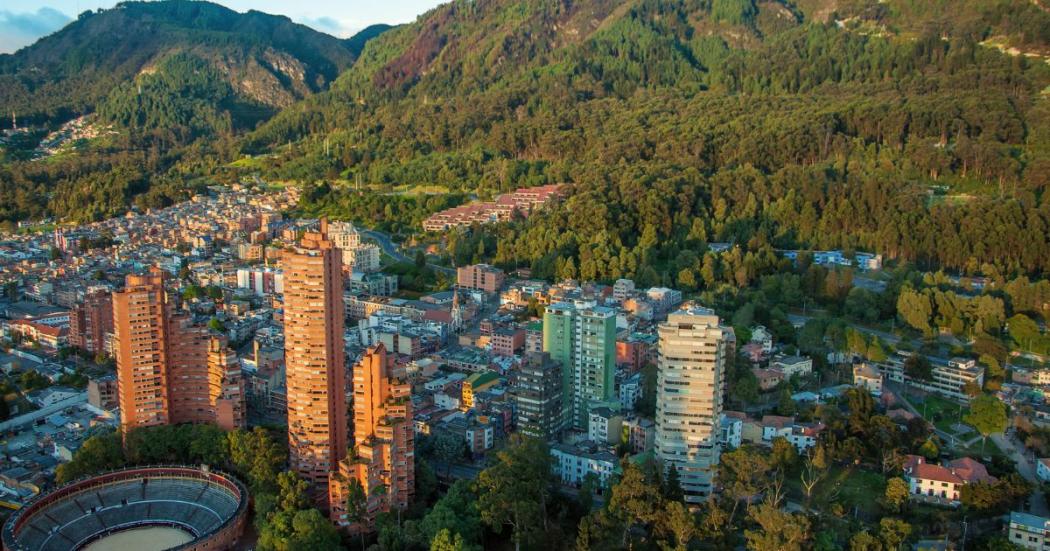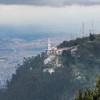Translated by Andrés Martínez
The eastern hills of Bogotá represent a valuable cultural and natural heritage for the city, providing opportunities for ecological hikes and hiking.
Recognized as a significant cultural, natural, and sustainability legacy, the mountains of Bogotá offer enriching experiences of connection and contemplation with nature to tourists, visitors, and residents.
At the Bogotá Tourism Institute (IDT), we work on interinstitutional coordination to enable and operate trails in the eastern hills of Bogotá, manage the tourist use of wetlands, metropolitan parks, mountain areas, and provide guidance for responsible utilization by users and tourism operators in these natural attractions.
The eastern hills stand out as the most attractive and abundant tourist destinations, teeming with fauna and flora. Spanning over 14,000 hectares from the districts of Usaquén in the north to San Cristóbal in the south, these hills are home to diverse species of native forests, indigenous vegetation, and picturesque streams and lagoons, offering tourists a deeply tranquil experience.
At the Institute, we promote sustainable development through balanced actions that ensure sustainable tourism experiences for visitors while also promoting the conservation of the natural and cultural surroundings of these biodiversity-rich spaces.
At the Bogotá Tourism Institute (IDT), we extend a warm invitation to tourists, visitors, and operators to enjoy the impressive natural potential offered by Bogotá's hills responsibly. We work towards achieving sustainable tourism experiences that encourage conscious enjoyment of these spaces. It's gratifying to see how several travel agencies have joined forces to offer specialized tours in passive contemplation, forest therapy, wellness, and birdwatching.
In 2023, in collaboration with the city's tourism operators, IDT conducted a promotional campaign for tours on six trails in the capital, resulting in approximately 282 reservations.
Furthermore, IDT has made significant contributions to trail signage through interinstitutional collaboration. Specific narratives have been developed for each of these areas, acknowledging topics such as the social configurations of natural spaces, reforestation and environmental recovery processes, the river's relationship with the city's colonial and republican history, and the significance of the contrasts between different ecosystems from an environmental recovery perspective.
With this publication on X, IDT invites you to discover the city responsibly.
#IDTRecomienda I Desde el #IDT te invitamos a descubrir #Bogotá de manera responsable y sostenible. Sumérgete en la magia de su diversidad natural, disfruta con amigos y familiares del encanto natural que tiene nuestra ciudad, conoce más en: 🌿✨https://t.co/FRqJz0iG6ipic.twitter.com/h8XswmTpXg
— IDTBogota (@IDTBogota) January 16, 2024
The following trails, managed by the Bogotá Aqueduct Company, have been prioritized:
- Santa Ana - La Aguadora, with a 2.8-kilometer route featuring characteristic native species of the high Andean forest.
- Quebrada La Vieja - Claro de Luna, covering a 1.6-kilometer path, part of the Bogotá River Basin and the Forest Reserve protecting the Eastern Forest of Bogotá.
- Quebrada La Vieja - La Virgen, with a total distance of 1.3 kilometers.
- Quebrada La Vieja - Alto de La Cruz, spanning 1.7 kilometers at an altitude of 3,200 meters above sea level.
- Quebrada La Vieja - Páramo (Piedra Ballena) with a 1-kilometer route.
- San Francisco - Vicachá, with a 3.8-kilometer path taking 45 minutes uphill and 30 minutes downhill.
- Guadalupe - Cumbre Cerro Aguanoso, featuring a 2.1-kilometer route.
Guided ecological visits to the hills aim to establish a deeper connection between visitors and nature, fostering spiritual and social development in a specific context. By exploring them, visitors are encouraged to recognize the extensive diversity of flora and fauna, as well as the importance of the different zones in the high mountains that connect various cultures and encompass ancestral knowledge.
These experiences also highlight the daily ecological relationships that occur within this unique ecosystem.
To explore their tourist potential safely and in the company of Tourism Police, we invite you to experience these hills through the website [Enlace del sitio web], where you should register to learn about the activities that can be carried out on each of them.









